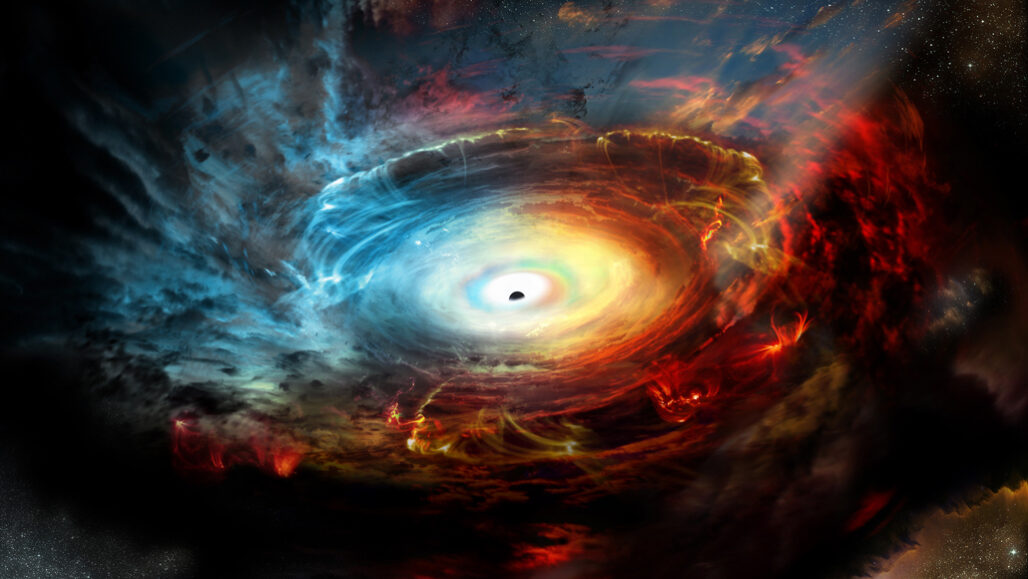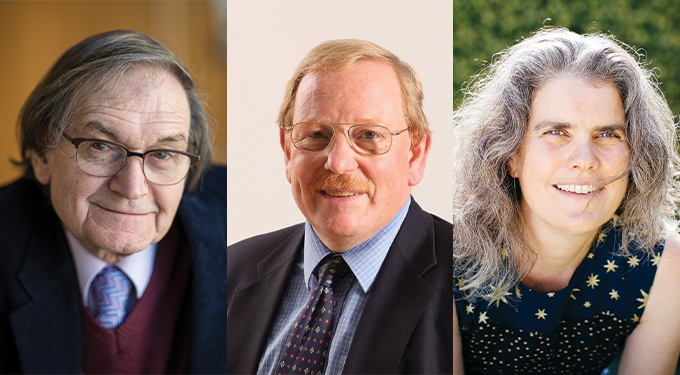2020 Physics Nobel goes for delving into black holes
The winners showed black holes could exist, and then helped demonstrate they actually did

Understanding black holes (one illustrated) earned three scientists this year’s Nobel Prize in physics.
NRAO, AUI, NSF, D. Berry/Skyworks
Research that revealed the most mysterious objects in the cosmos — black holes. Now scientists that helped prove their existence have just won the highest honor in science, a Nobel Prize.
Black holes are massive objects. Their gravitational field is so strong that nothing can escape it, not even light. At their centers, black holes harbor a puzzling zone called a singularity. There, the laws of physics cease to make sense.
No question, these objects are strange. Three scientists who helped uncover details about black holes share this year’s Nobel Prize in physics. Roger Penrose works at the University of Oxford in England. Reinhard Genzel works in Garching, Germany at the Max Planck Institute for Extraterrestrial Physics and at the University of California, Berkeley. Andrea Ghez is at the University of California, Los Angeles. The Royal Swedish Academy of Sciences announced their selection on October 6.
Black holes “really represent the breakdown of our physical understanding of the laws of physics,” says Ghez. Studying such exotic objects “pushes forward on our understanding of the physical world,” she noted in a phone call during the announcement.
When black holes were first proposed, scientists were not sure that they existed. The idea for them arose out of Albert Einstein’s general theory of relativity. Penrose eventually performed mathematical calculations that showed black holes are physically possible. For his contribution, Penrose will receive half of the 10 million Swedish kronor prize (more than $1.1 million).
The other half will be split between Genzel and Ghez for their work showing that one of these dark objects lurks at the center of our galaxy, the Milky Way.

No longer just a weird concept
“For many years, physicists questioned the very idea of a black hole,” said David Haviland. He chaired this year’s Nobel Committee for Physics. During an announcement of the prize, he noted that it “celebrates … the discovery of one of the most exotic objects in our universe.”
Penrose invented strategies to tackle the complexities of black holes. His work revealed that black holes were not just mathematical ideas suggested by Einstein’s theory. His math showed they could form in conditions likely to exist in the universe. In 1965, he published a landmark paper in Physical Review Letters. It described how matter could collapse to form a black hole. It also would have a singularity at its center.
Some of Penrose’s insights came while walking in the woods, he said. “I would think about these questions as I was walking … thinking about what it would be like to be in this situation with all this material collapsing around you and what would happen.”
Beginning in the 1990s, Ghez and Genzel each led teams that used telescopes to peer at the center of the Milky Way. They were measuring the orbits of stars that zip around the galaxy’s heart. Those stars move so fast, both teams found, that only an incredibly compact, massive object such as a giant black hole could explain their trajectories. That work, which has continued in the decades since, helped confirm the existence of black holes. They also helped confirm the predictions of general relativity.
The Milky Way’s central black hole is called Sagittarius A*. It has 4 million times the mass of the sun. Scientists now think such supermassive black holes sit at the center of most large galaxies.
Ghez is only the fourth woman to win the Nobel Prize in physics. Marie Curie was the first, in 1903. After her were Maria Goeppert Mayer in 1963 and Donna Strickland in 2018.







